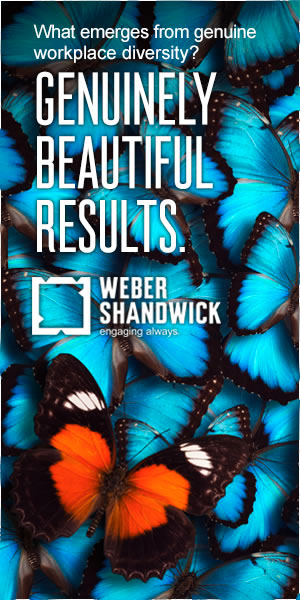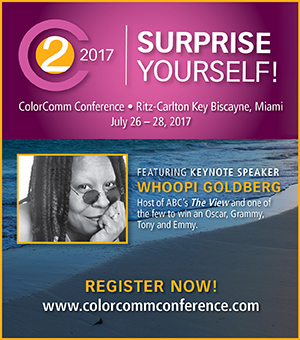Hill Holliday recently strengthened its leadership team by naming agency veterans Chris Wallrapp President and Leslee Kiley Chief Operating Officer, in a January 24 announcement by Karen Kaplan, Chairman & CEO of Hill Holliday.
“In the last 18 months we’ve developed some remarkable momentum,” said Kaplan, in a statement, “but we’re not about to take our foot off the gas. Which is why it’s the perfect time to double down on our leadership strength, so I can focus on critical industry issues and where marketing’s headed ten years from now.”
With the new appointment of Kiley as COO, the agency now has 4 women in the C-Suite: Kiley, Karen Kaplan, CEO, Lesley Bielby, Chief Strategy Officer, and Ruthanne Russell, Chief Human Resources Officer. Additionally, Cindy Stockwell, is the President of Trilia Media.
Kaplan joined Hill Holliday as a receptionist, hoping to save enough money for law school. Three decades later, she’s had just about every job there is to have at an agency, gaining valuable insight into how to approach each business challenge with a fresh perspective.
As Chairman & CEO, she oversees the network of three agency brands: Hill Holliday, Erwin Penland, and Trilia Media. With an executive team composed of over half women, Kaplan is also one of the few female agency chairmen in the country.
And her work around promoting gender equity and diversity has continued to be a top priority.
The agency’s creative department also went from 20%-40% female in two years, and is currently 11.9% diverse, due to its “Program35″ internship program.
DIVERGE spoke to Kaplan to find out more about her focus on their diversity practices and goals.
Why is diversity important to you?
For all the obvious reasons, diversity is important to me. For me, it’s about really focusing on our work. I see the impact that just over the past year that it has made in our work. It’s just much more diverse and much more representative of the population who are consuming our work.
How did Hill Holliday start its initiatives?
So we have a diversity council that’s a 100 percent voluntary and the first thing we did was organize ourselves into three groups. PRE, HERE, and WORK.
The “pre” group is all about recruiting and getting people interested in our industry and our agency.
The “here” group is obviously about helping people be successful here and advance their careers.
The “working” group is about figuring out how to have a diverse population and how it will positively impact our work.
Obviously, they are sequential. First, you have to attract, then retain and advance and then the work is impacted.
How do clients react seeing the number of female leadership in the room?
We have really focused on having all kinds of diversity but where we’ve really hit a tipping point and we’re super proud of, is with women, at all levels.
We have had current and prospective clients comment that when we walk into a room with our team, it doesn’t look like most agencies.
We always feel the team should look diverse, not because we should look diverse, but because we are committed to the idea that it makes the work better and makes the work connect better.
Does this help gain more clients, especially ones trying to target a female audience?
Our clients are pretty diverse in terms of who they target. But as I said, just about every category is largely targeting women.
We have clients like Bank of America and Dunkin Donuts that literally target everyone- everybody who has got a checking account and a credit card and a home loan or everybody who drinks coffee and need baked goods in the morning.
We also have clients like the Great Wolf Lodge and TJX in which we know that the traditional buyer is mostly a female but females also influence automotive purchases and technology purchases, although traditionally they are thought of being a male category.
That’s why it’s crucial to understand that women influence every purchase .
Can you tell me about your “35 Creative” program?
We’ve always had a really strong and competitive and recognized internship program. Our largest internship program is in the summer n which about 40 rising seniors compete for a job and at the end of the internship we hire 15-20 of the interns depending on their work.
We reserve a 1/3 of spots in that program for diversity students.
But about four years ago, we created a separate program called that we call Program35, which is specifically for creative interns.
What we started it four years ago, the first group was only four women because it was a pilot and all four women were offered jobs at the end of the program.
Because of this program, the agency’s creative department also went from 20%-40% female in two years, and is currently 11.9% diverse.
And we are 11 percent diverse but that’s not anything to be proud of because there is a lot more work to be done.
Why is it that agency creative’s have a hard time with diversity?
Creative is the most stubborn problem area for diversity in our business and I can’t quite figure out why, both in terms of women and people of color.
I have asked professors, other agency leaders, and anybody that had perspective on this but no one has a real answer. Mostly, I hear “Well, you know it’s hard.”
Why is it important?
I read something just over the weekend about a study amongst young kids between 5 and6 years old to find out where the bias starts in children- not thinking that they are smart.
The research showed five year olds pictures of males and females and asked who is smarter. 5-year-old girls picked girls but 6-year-old girls picked boys. So what are we doing to these kids, how early does it start?
What’s next?
We can retain our gender balance and LGBTQ balance, what we really need to focus on is people of color.
Last August, we conducted a national qualitative study with over 1600 respondents, skewing towards the younger, just starting out age group.
In the survey, we specifically recruited for respondents with a racially diverse demographic. We wanted to learn about why young people do or don’t choose to go into advertising and we obviously had a racially diverse group.
It was very difficult for me to digest the findings because the problem is that there is no perception. People don’t know anything about our industry. They don’t know what we do for a living.
So there’s no perception, a misperception, or there’s actually a negative perception here. But what we saw specifically amongst people of color was that there were two other barriers. One is community and there’s a dual meaning to community, meaning there’s no perception and there’s no sense of community.
How will you address this?
We need to talk about it. As a purpose driven agency. we don’t talk enough about our pro-bono work. As an industry, we need to educate people about what we stand for and what kinds of jobs are available.

